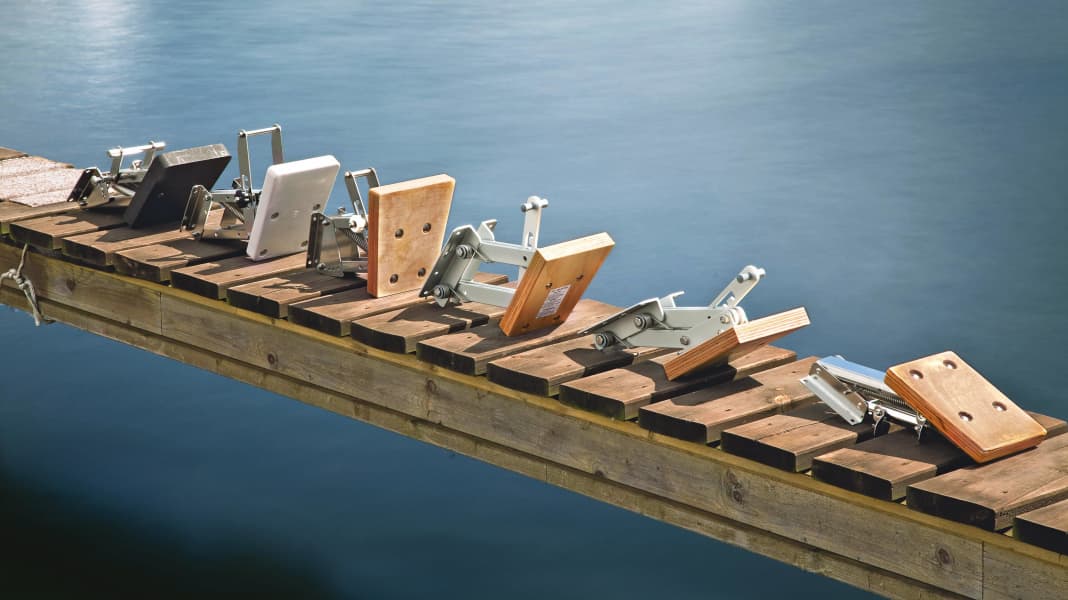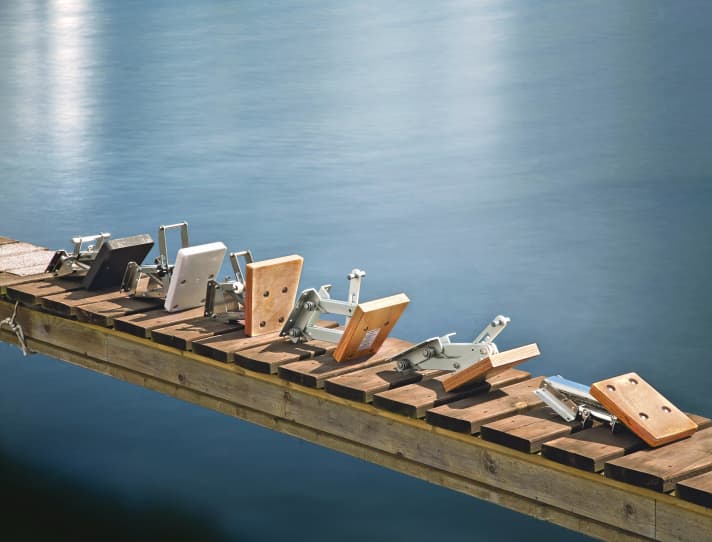

The manufacturer probably didn't mean it to be quite as flexible as some of the designs in the test. In fact, it is merely intended to make it clear that it is a catch-up or height-adjustable version.
Purpose: to lift the auxiliary motor completely out of the water when not in use and thus prevent the propeller from braking.
Some shipyards equip their boats with customised special designs from the outset. Most boats, however, come to the customer with either a fixed board or standard equipment.
The most common designs are parallelogram constructions, i.e. the motorised mirror is suspended from two swing arms and can be moved up and down with the support of a spring.
This brings us straight to the most important selection criterion. Because in order for the drive to catch up comfortably, the balance between engine mass and spring strength must be right, otherwise the outboard motor will rush downwards rapidly.
You can download the entire test here as an original PDF on 5 pages.
Downloads:
download
